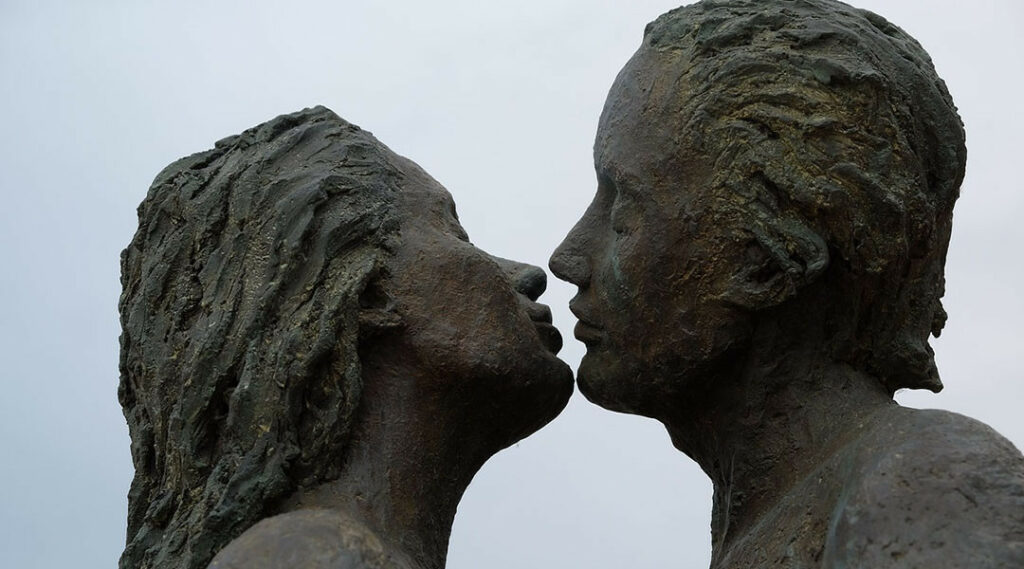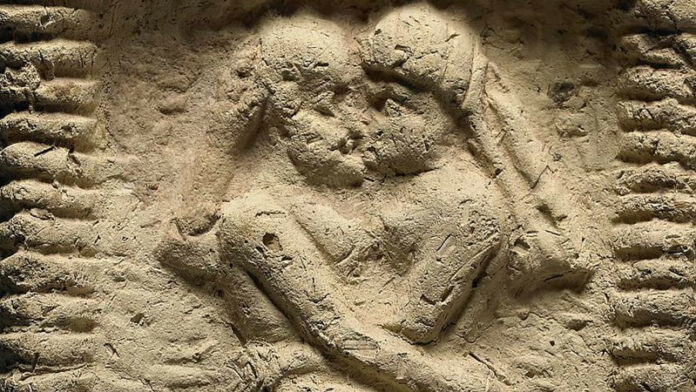Ancient Mesopotamian texts from around 1900-1595 BCE contain some of the earliest known depictions of romantic kissing. One tablet from the city of Sippar reads: “My upper lip becomes moist, while my lower lip trembles! I shall embrace him, I shall kiss him.” While this 4,000 year old evidence is the oldest found in writing, archaeologists and geneticists believe the act of kissing likely dates back much further, perhaps to the origin of our species.

The Role of Kissing in Human Society
Kissing serves multiple purposes in human interactions. Pecks on the cheek are common greetings between family and friends in many cultures. But the passionate, open-mouthed kiss between lovers is the subject of ongoing research. Some believe kissing helps humans assess potential mates, as saliva contains hormones and compounds that provide subconscious clues about compatibility. Kissing also strengthens pair bonding. Nonhuman primates like bonobos and chimpanzees engage in kissing behaviors as well, both sexual and social.
Hints from Prehistory
While clear evidence exists that humans interbred with Neanderthals, as proven by DNA, the question remains whether the two species engaged in kissing. A 48,000-year-old oral microorganism found in both Neanderthal and human remains suggests the possibility of kissing, though shared meals could also explain the connection. The 11,000-year-old Ain Sakhri sculpture depicts an embracing couple who may be kissing, but a lack of facial features leaves the interpretation open.
Kissing and Disease Transmission
One unfortunate consequence of kissing is the spread of disease. Herpes simplex virus 1 (HSV-1), Epstein-Barr virus, human parvovirus, and the common cold can all be transmitted via saliva. A single kiss can exchange up to 1 billion bacteria. While ancient Mesopotamians did not connect kissing to disease in their medical texts, a mouth disease they called bu’sanu may have been herpes.

The Rise of HSV-1
Researchers sequenced the genome of the herpes virus and traced the emergence of the dominant HSV-1 strain to around 5,000 years ago, during Bronze Age migrations from Eurasia to Europe. They theorize that a new cultural practice spread alongside these population movements – deep kissing – and propelled HSV-1 to prominence. Today, an estimated 3.7 billion people under age 50 are infected with HSV-1 globally. However, given the long history and broad geographic spread of kissing, the idea that a sudden epidemic spread the practice and the virus is unlikely. Rather, kissing has played a steady role in disease transmission throughout human history.
Kissing Across Cultures
While kissing is depicted in ancient texts and artwork from Mesopotamia, India, and Egypt, it is not a universal human practice. A 2015 study of 168 cultures worldwide found that romantic kissing was common in only about half of them. This suggests that societies that did not adopt the practice may have found it off-putting or taboo. The spread of kissing likely occurred gradually through cultural mixing and exchange of ideas, rather than being rapidly embraced by populations encountering it for the first time.
The Future of Kissing Research
As scientists continue to study the origins and evolution of kissing, they aim to better understand its role in human relationships and disease transmission. Further archaeological and genetic evidence may help pinpoint when and where the practice first emerged. Ongoing psychological and physiological research will shed light on the mechanisms behind kissing’s pair-bonding effects and its influence on mate selection.

At the same time, epidemiologists will continue to trace the spread of kissing-related pathogens, both in the past and present day. By understanding how these diseases have propagated and evolved alongside human populations, we can develop better strategies for prevention and treatment.
Kissing remains a fascinating and complex aspect of human behavior, one that has shaped our social interactions and physical health for millennia. As research into this intimate act continues, we will undoubtedly uncover new insights into the history and science of the kiss.

